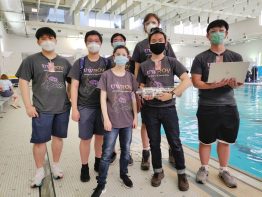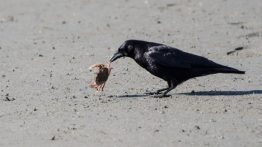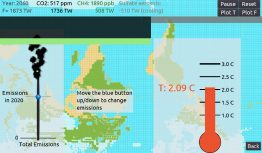Five graduate students from the College of the Environment have been awarded Washington Sea Grant (WSG) fellowships. Corinne Noufi, Natalie Lowell, Katie Byrnes and Katie Shelledy from the School of Marine and Environmental Affairs (SMEA), were awarded the WSG Hershman Fellowship and Alanna Greene, a recent graduate of SMEA was selected as a finalist for the Sea Grant John A. Knauss Marine Policy Fellowship.
Read more »The road to world competition for underwater robots
A clear tube crammed full of electronics, protected by a purple cage studded with thrusters, traveled from Seattle to Tennessee to compete with underwater robots from all over the world in the MATE ROV World Championship Competition. This particular robot, named Nautilus, is the result of three years of work from the Underwater Remotely Operated Vehicles (UWROV) team at the University of Washington.
Read more »UW professor and lead author on IPCC report sees hope for our climate future
It may seem counterintuitive, but on the heels of the most recent IPCC report on our changing climate, Kyle Armour finds reasons for optimism. “The degree of climate change we’ll experience this century depends on our future greenhouse gas emissions, which depend on the collective choices we make. Our future is up to us,” says Armour. He posted his thoughts on Twitter when many headlines about the report’s findings were overwhelmingly grave.
Read more »Crow science for kids (and adults!)
Chances are good that no matter where you live in the U.S., you’re somewhat familiar with crows. Perhaps you’ve seen them perching on a telephone pole, flying overhead, or raiding garbage. You can also likely recognize their caws. But have you ever noticed a crow letting ants crawl all over it, or sprawled out on the ground with its wings and mouth open on a hot day?
Read more »Cracking the code
These days, very little science occurs without someone typing at least a few lines of code into a computer. Researchers employ a variety of programming languages — such as R, Python and Bash — and software to organize their data, perform analyses, build models, and visualize results. College of the Environment scientists are no different, and that has implications for science, communication and how students will gain new computational skills in the future.
Read more »





